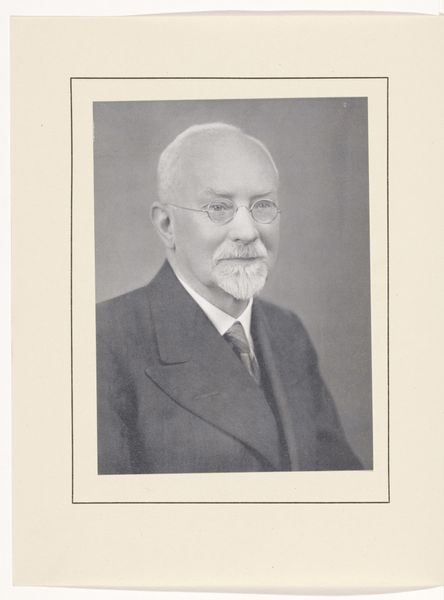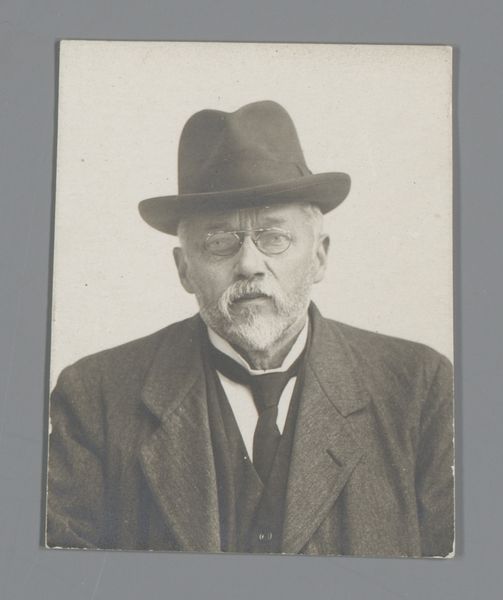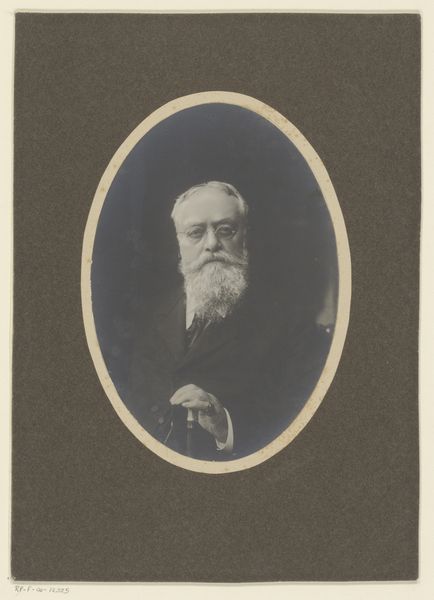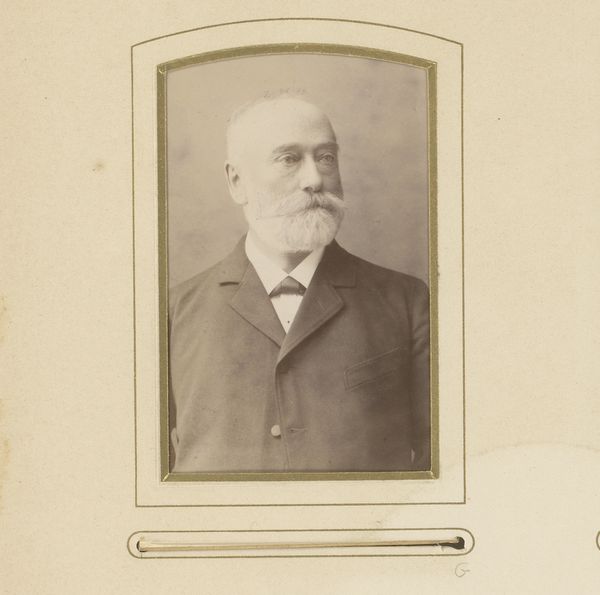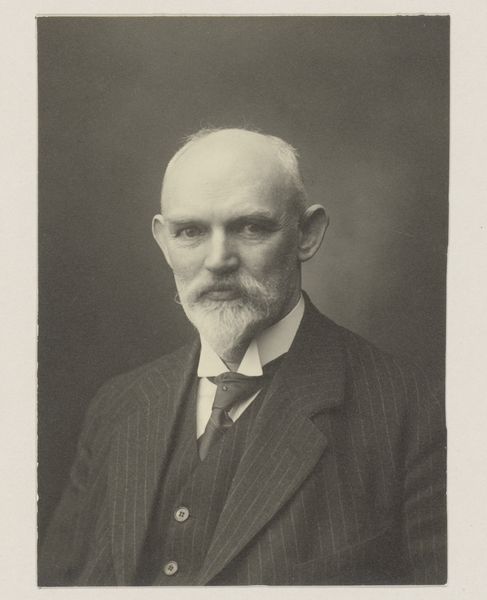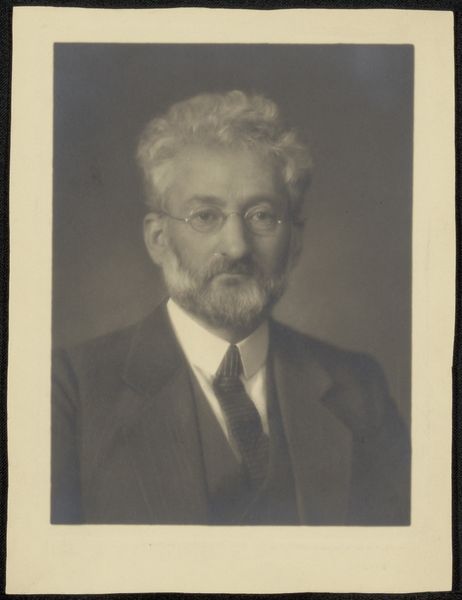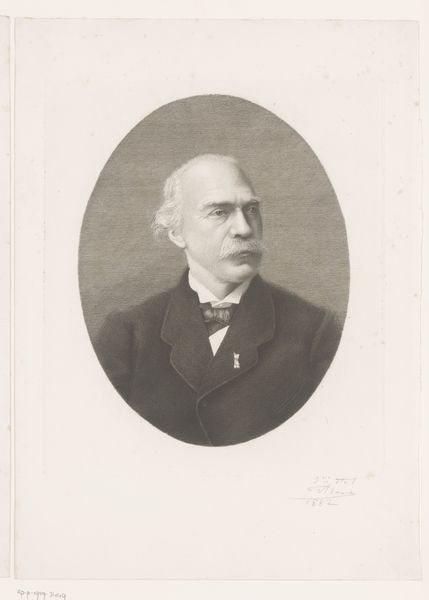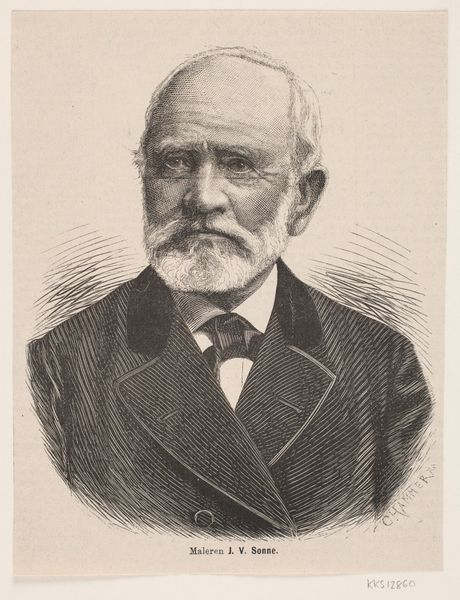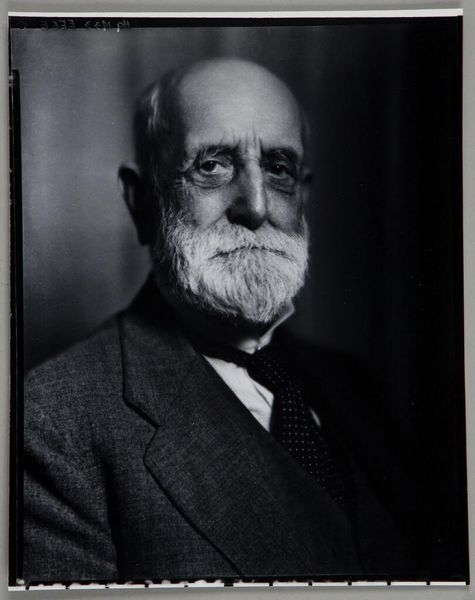
photography, gelatin-silver-print
#
portrait
#
photography
#
historical photography
#
gelatin-silver-print
#
modernism
#
realism
Dimensions: height 157 mm, width 100 mm, height 230 mm, width 350 mm
Copyright: Rijks Museum: Open Domain
Editor: This is "Portrait of Benjamin Dawson Maggs," a gelatin-silver print dating from after 1935. The subject's distinguished demeanor caught my eye, but the photographic process itself feels very deliberate. What strikes you about this work? Curator: Well, looking at it through a materialist lens, the gelatin-silver print is key. It was a dominant photographic process then, enabling mass production and wider consumption of images. This particular print speaks volumes about the democratization of portraiture at the time. Before, such a formal portrait was reserved for the elite, executed through laborious and costly means like oil painting. Here, photography presents a more accessible and, arguably, reproducible form of identity construction. Editor: So you are saying that the photographic method of gelatin-silver prints had an effect on what was viewed as elite or common? Curator: Exactly! The chemical processes involved—the silver reacting to light, the fixing process to create permanence—highlight the intervention of industrial means. It shifts the focus from individual artistic skill to a standardized procedure. The level of detail, or realism, is itself an outcome of this chemical interaction between subject, light, and the prepared medium. This print encourages one to consider how labor, in both its production and consumption, influences our perception and appreciation of the final image. How does this reproduction of image compare to painting a portrait? What about the labor to mass-produce these photos versus individual ones? Editor: I hadn't considered the shift in labor that this photograph signifies. Thinking about it that way, it truly underscores the societal changes happening with technology in the art world. Curator: Yes, and by thinking critically about production, materiality, and the resulting consumerism, we move past the purely aesthetic reading and into a conversation about the broader social context in which this portrait was made and circulated. I hope you will further consider what art would be without industrial advancements.
Comments
No comments
Be the first to comment and join the conversation on the ultimate creative platform.
